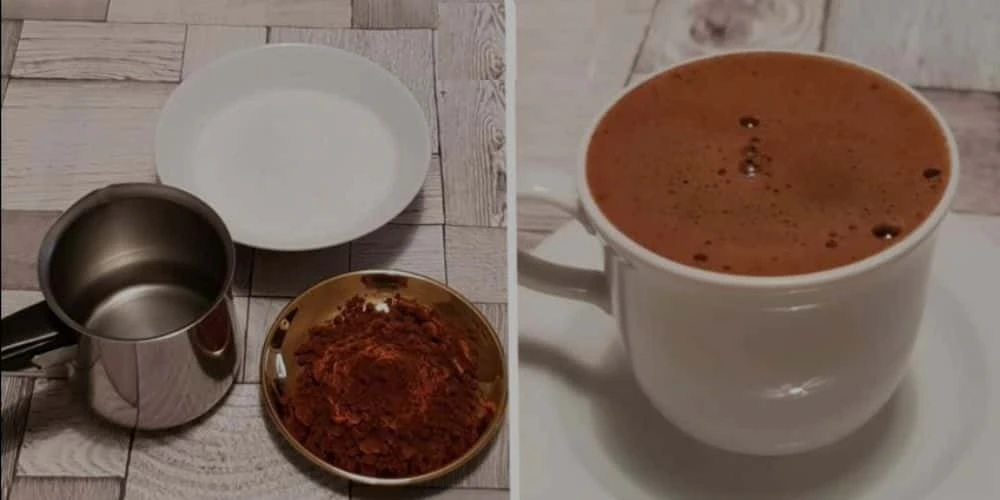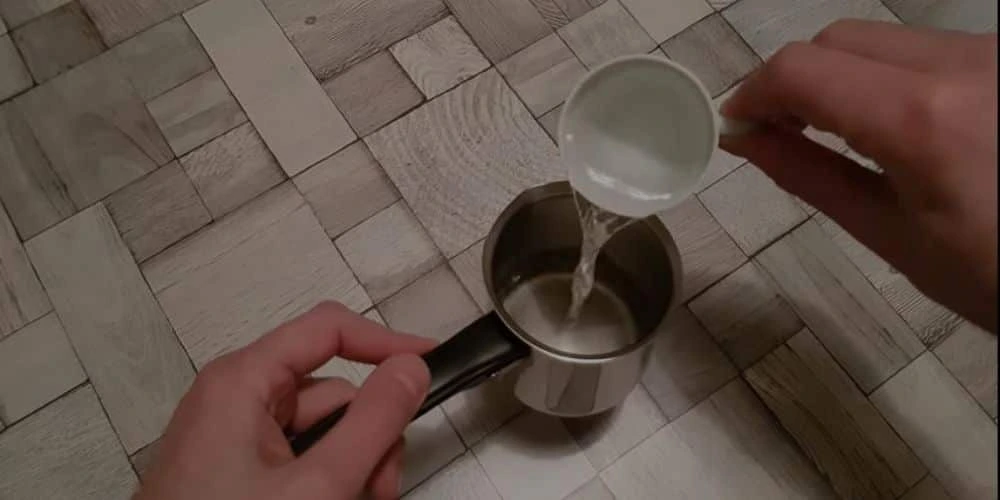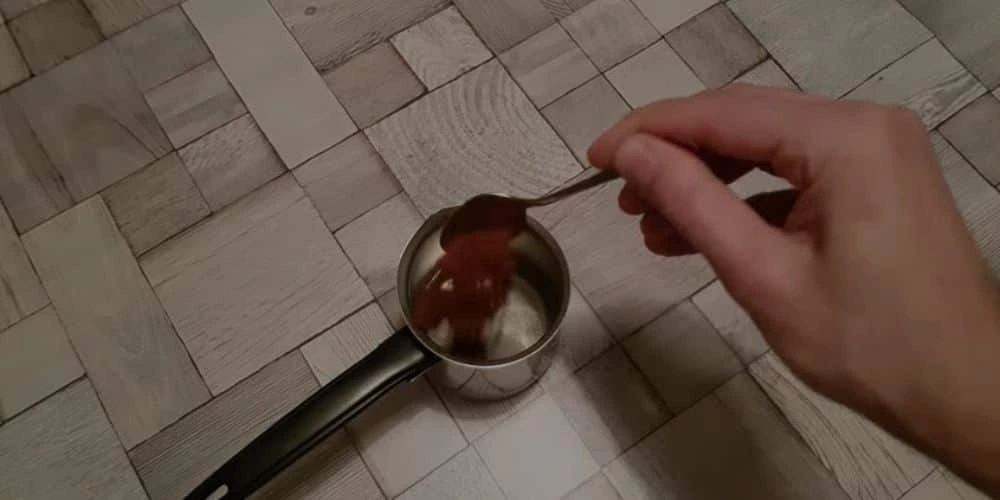To make Greek coffee, combine finely ground coffee, sugar, and water in a briki, bring to a boil, and then let it simmer before serving. Greek coffee is a traditional caffeine-rich drink that is deeply ingrained in Greek culture and often enjoyed with friends and family.
The process of making Greek coffee is as much about the experience as it is about the final result. With a distinct brewing technique and unique equipment, Greek coffee has a strong, rich flavor and a foam-like layer on top.
Whether you want to dive into Greek culture or simply indulge in a flavorful coffee experience, making Greek coffee can be a wonderful addition to your culinary repertoire.
Ingredients and Equipment You Will Need

Making Greek coffee at home is a delightful experience that allows you to savor the rich flavors and unique aroma of this traditional beverage. To get started, you’ll need a few key ingredients and equipment.
Choosing The Right Coffee
When it comes to making authentic Greek coffee, the type of coffee you choose plays a vital role in achieving the perfect taste. Traditionally, Greek coffee is made from finely ground dark roast coffee beans, specifically a medium-coarse grind. This type of grind is essential for achieving the characteristic foam and rich flavor of Greek coffee. The grind should be somewhere between espresso and drip coffee, with a consistency resembling powdered sugar.
To preserve the authentic flavors, it’s best to use Greek or other Mediterranean brands of coffee. Popular choices include Loumidis, Bravo, Illy, Lavazza and Papagalos. These brands are known for their exceptional quality and distinct taste that sets Greek coffee apart.
Deciding On The Amount Of Coffee And Water
The next step in making Greek coffee is determining the right ratio of coffee to water. The general rule of thumb is to use one heaping teaspoon of coffee per demitasse cup (2–3 ounces) of water. However, this can be adjusted according to personal preference.
If you prefer a stronger coffee, you can add an extra teaspoon of coffee for each serving. Alternatively, if you enjoy a milder flavor, reduce the amount of coffee accordingly. The key is to find the balance that suits your taste buds and allows you to fully appreciate the nuances of Greek coffee.
Gathering The Necessary Equipment
To ensure a successful brewing process, it’s important to have the right equipment on hand. Here are the essential items you’ll need:

- A briki (also known as a cezve) – This is a special long-handled pot with a wide base and a narrow top. Its unique design helps in the proper brewing and foaming of the coffee.
- A heat source – You can use a stovetop burner, an electric cooktop, or even an open flame.
- A demitasse cup – These small cups, usually made of porcelain or ceramic, are designed to serve Greek coffee.
- A teaspoon – For measuring coffee and stirring the brew.
- A heatproof surface – To place the briki on while brewing
Having these items readily available before you start will make the process smooth and enjoyable, allowing you to focus on the art of creating the perfect cup of Greek coffee.
Preparing Greek Coffee: Delicious Recipe
Greek coffee, also known as “Ellinikos Kafes,” is a traditional and popular beverage in Greece. It is enjoyed for its strong flavor and unique brewing method. Preparing Greek coffee requires precise measurements and the right technique to achieve the perfect cup.
In this guide, we will walk you through the steps of preparing Greek coffee, from measuring the coffee and water to the final step of pouring the coffee.
Measuring The Coffee And Water

Measuring the coffee and water accurately is crucial to achieving the authentic taste of Greek coffee. Here’s how to do it:
- Use a traditional briki, a small narrow-topped pot specifically designed for making Greek coffee.
- For each serving, measure one demitasse cup of cold water. A demitasse cup is a small cup that typically holds about 2 ounces.
- Next, measure one heaping teaspoon of finely ground Greek coffee for each demitasse cup of water.
- Adjust the amount of coffee according to your preference for a stronger or milder cup.
Adding Sugar (optional)

Adding sugar is a matter of personal taste, and it is optional in Greek coffee. If you prefer your coffee sweet, here’s how to add sugar:
- If desired, add sugar to taste before mixing the coffee and water.
- A traditional way to measure the sugar is to use the demitasse cup. For a medium-sweet cup of coffee, add one teaspoon of sugar per demitasse cup.
- Adjust the amount of sugar to suit your taste preferences. Some coffee enthusiasts prefer to enjoy Greek coffee without any sugar.
Mixing The Ingredients
After measuring the coffee and water, it’s time to mix them together in the briki. Follow these steps:
- Pour the measured water into the briki.
- Add the ground coffee (and sugar, if desired) into the water.
- Using a small spoon or stirring stick, gently stir the mixture until the coffee and sugar dissolve.
- Make sure you mix it well to ensure a homogeneous blend.
Boiling The Coffee

Once the coffee and water are mixed, it’s time to bring the mixture to a boil. Here’s how:
- Place the briki over low heat on a stovetop or a heat source. Ideally, use a gas stove for better temperature control.
- Allow the coffee mixture to heat slowly and reach a boil. Be patient, as this process takes a few minutes.
- As the coffee starts to heat, you will notice it begins to foam and rise. Be sure to keep a close eye on it to prevent overflowing.
- Just before the coffee reaches a rolling boil, remove the briki from the heat to avoid spilling or burning the mixture.
Pouring The Coffee
Once the coffee has boiled, it’s time to pour it into the demitasse cups. Follow these steps:
- Hold the briki’s handle with a towel or an oven mitt, as it will be hot.
- Slowly pour the coffee into demitasse cups, dividing it equally among the cups.
- Leave behind the foam which forms on the surface of the coffee in the briki.
- Serve the coffee alongside a glass of cold water to cleanse the palate between sips.
The process of preparing Greek coffee is not only about making a delicious cup but also about embracing the rich cultural tradition that comes with it.
Serving And Enjoying Your Greek Coffee

Greek coffee is not just a delicious and aromatic beverage; it’s also a cultural experience that has been enjoyed for centuries. To truly appreciate the rich flavors and unique brewing method of Greek coffee, it’s important to serve and enjoy it traditionally.
“As long as there was coffee in the world, how bad could things be?”
Cassandra Clare
Choosing The Right Coffee Cup
When it comes to Greek coffee, the cup you use is as important as the coffee itself. The traditional cup for serving Greek coffee is called a “bríki” or “cezve,” which is a small, narrow pot with a long handle. These unique pots are designed to help create a thick layer of foam on top of the coffee.
If you don’t have a bríki or cezve at home, you can use a small heat-resistant coffee cup instead. Just make sure it has a narrow opening and can withstand high temperatures.
Pairing Greek Coffee With Traditional Sweets
In Greece, coffee is often enjoyed with a side of traditional sweets, such as baklava or Loukoumades. The sweetness of these treats complements the strong, robust flavors of the coffee perfectly.
The combination of the bitter coffee and the sweet treats creates a harmonious balance of flavors that is truly delightful. So, when you serve Greek coffee, don’t forget to include some traditional sweets to complete the experience.
Understanding Greek Coffee Culture
Greek coffee is not just a beverage; it’s a way of life. In Greek culture, coffee is a symbol of hospitality and friendship. It is often served to guests as a welcoming gesture and is enjoyed during social gatherings and special occasions. Greek coffee is prepared slowly and enjoyed leisurely, allowing people to come together, engage in meaningful conversations, and savor the moment.
Tips For A Perfect Greek Coffee Experience
To ensure your Greek coffee experience is perfect every time, here are a few tips:
- Use freshly ground coffee beans for the best flavor.
- Measure the coffee and water precisely for the perfect balance.
- Stir the coffee gently while it’s brewing to create a rich foam.
- Serve the coffee with traditional sweets for a delightful pairing.
- Take your time to enjoy the coffee and the company of those around you.
By following these tips, you can immerse yourself in the rich tradition and flavors of Greek coffee and truly enjoy the experience.
Conclusion
Creating a delicious cup of Greek coffee requires a few simple steps. From choosing the right coffee blend to mastering the traditional brewing method, you can easily enjoy the rich flavors and unique aroma of this popular beverage. So why not give it a try and experience the warmth and tradition of Greek coffee for yourself?
Raise your cup and savor every sip of this delightful and distinctive drink.
A. I. Moon
A.I. Moon, an experienced SEO Pythonista, spends his days coding and developing web applications to help business owners. A passionate coffee enthusiast, he believes that drinking coffee fuels his creativity and productivity. His day isn't complete without the rich aroma and invigorating warmth of a perfectly brewed cup. This love for coffee inspired him to found EspressoRivo, a platform dedicated to sharing his coffee knowledge and fostering a community of passionate aficionados.





